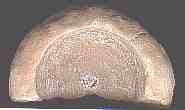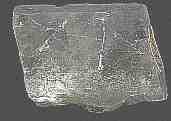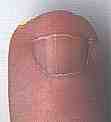The Bead Site =Home>Beadmaking & Materials>Stones > Hardness
The Hardness of Minerals
In 1822 Frederick Mohs devised a scale for the hardness (actually scratchability) of minerals from 1 (softest) to 10 (hardest). A stone with a higher hardness will scratch one with a lower hardness. While not strictly scientific it is so clever that it is still widely used. Medium numbers (½, ¼) are also used.
|
You can easily build a set of these minerals.
You can also keep in mind the following common items that will sort out many minerals.
|
__________________________________________________
Small Bead Businesses | Beading & Beadwork | Ancient Beads | Trade Beads
Beadmaking & Materials | Bead Uses | Researching Beads | Beads and People
Center for Bead Research | Book Store | Free Store | Bead Bazaar
Shopping Mall | The Bead Auction | Galleries | People | Events
The Bead Site Home | Chat Line | Contact Us | Site Search Engine | FAQ












